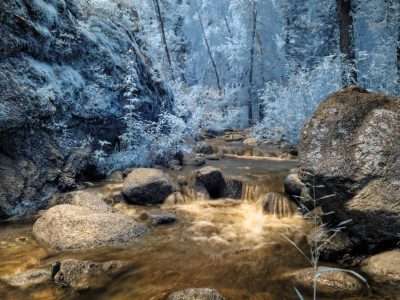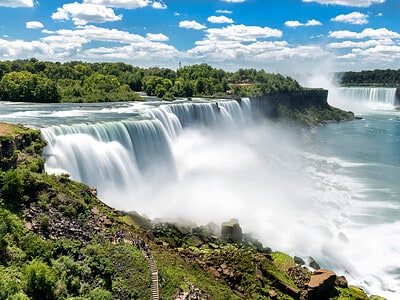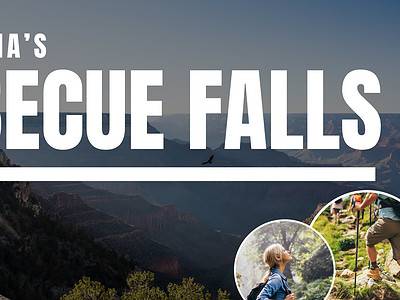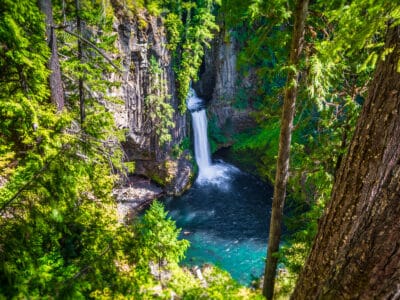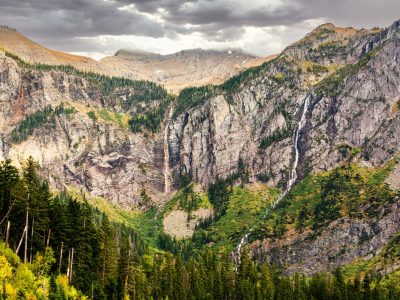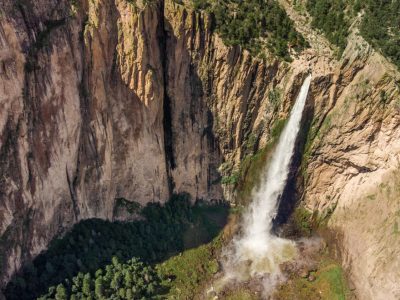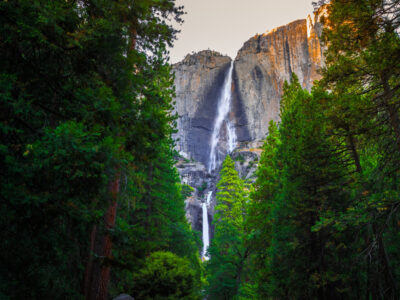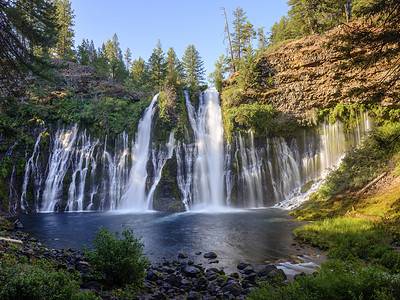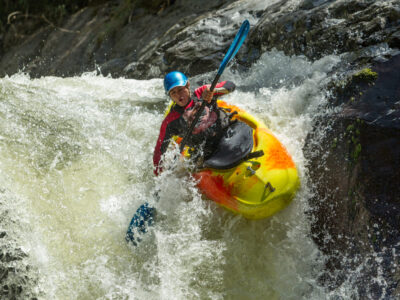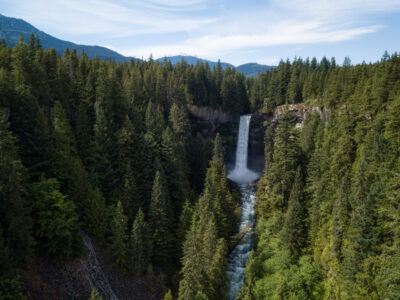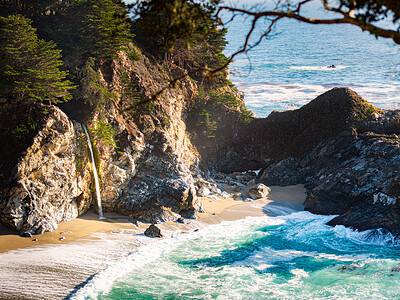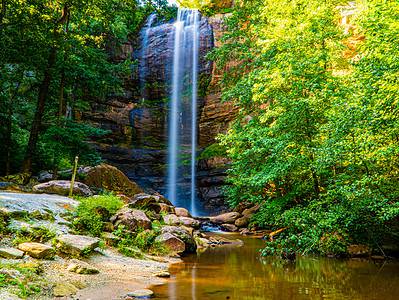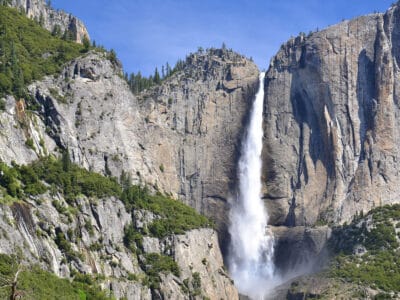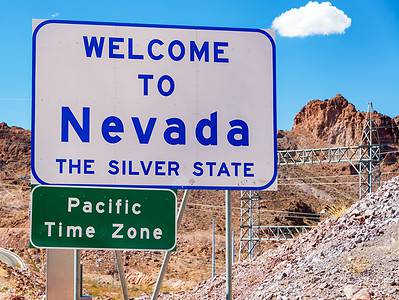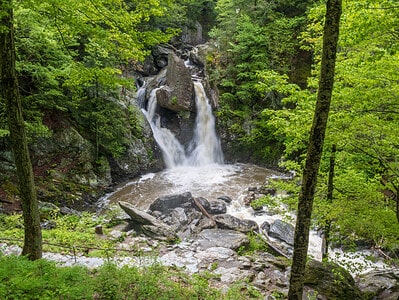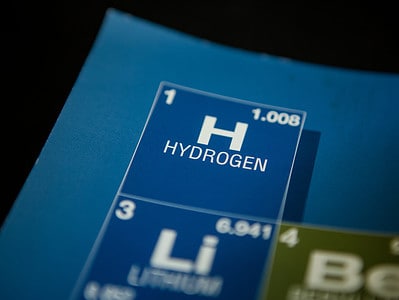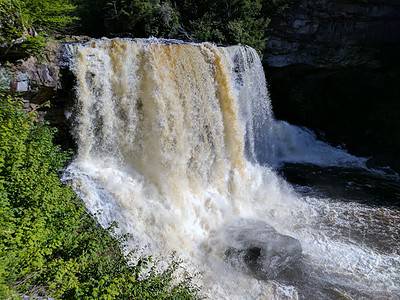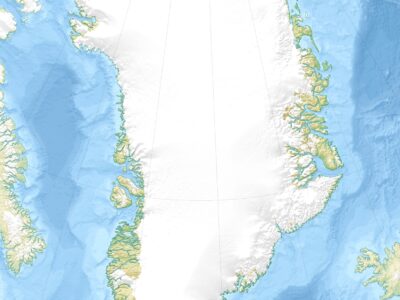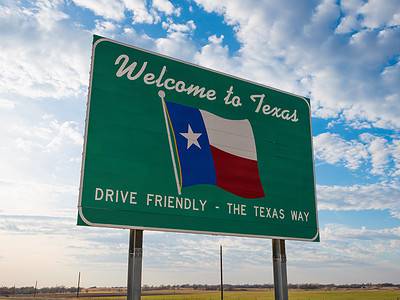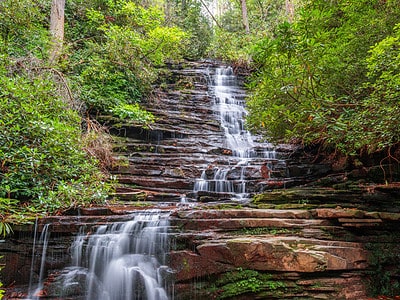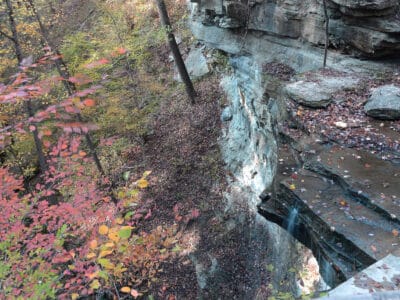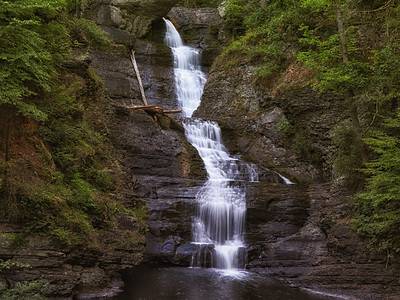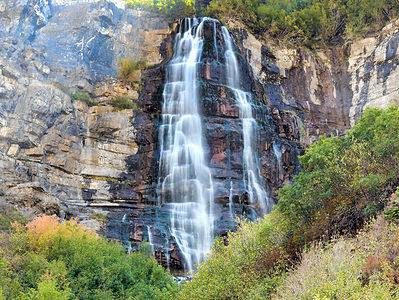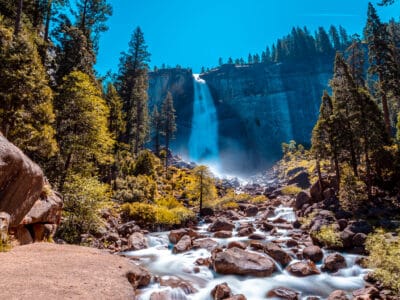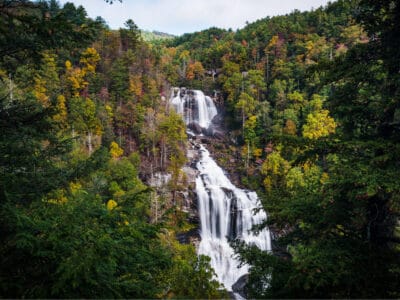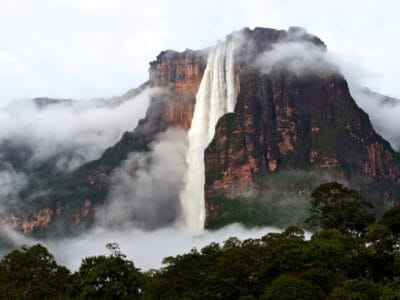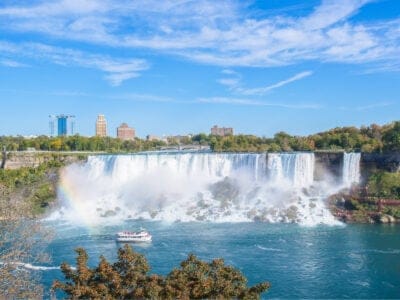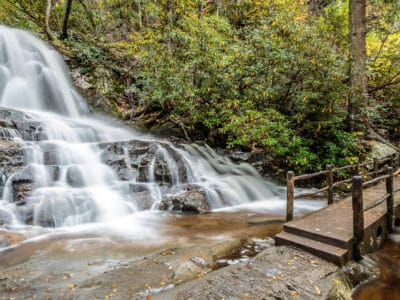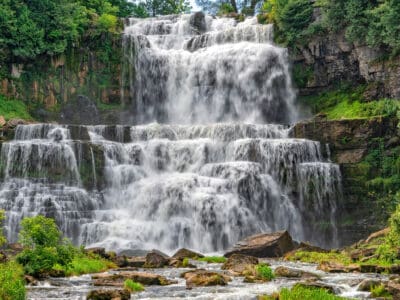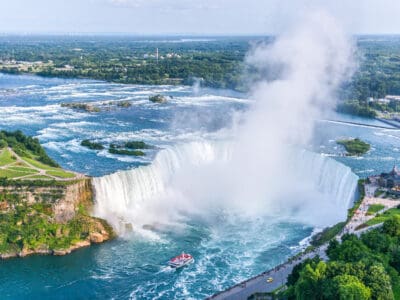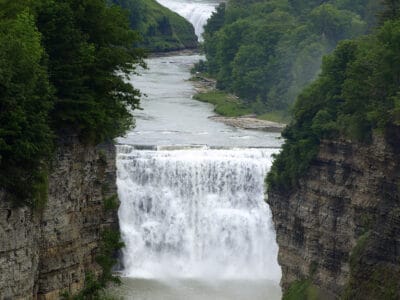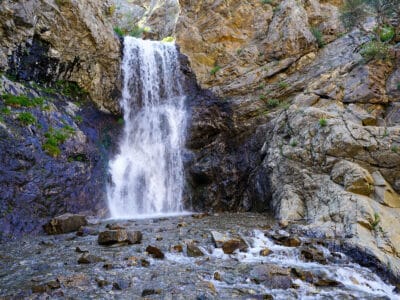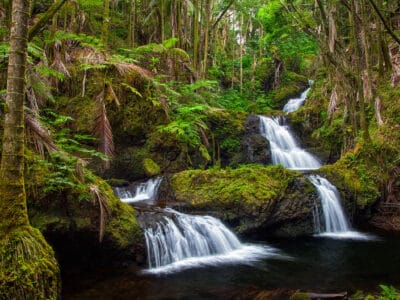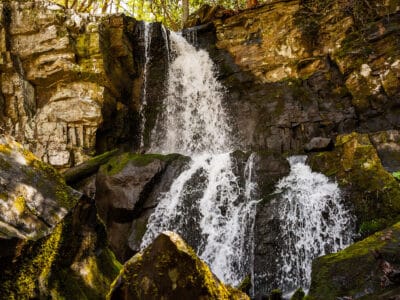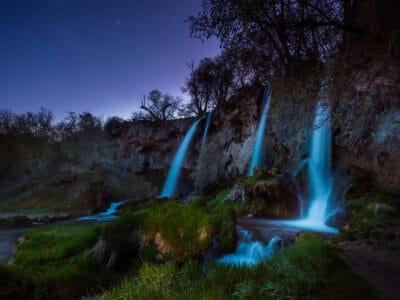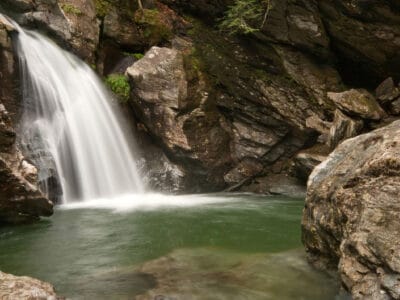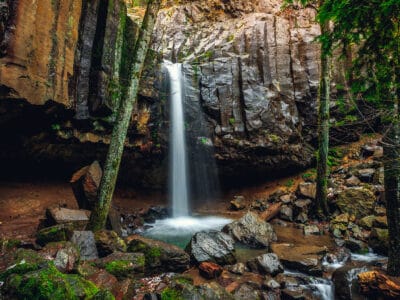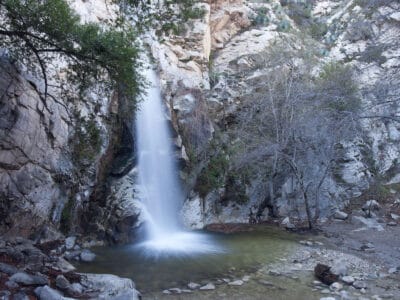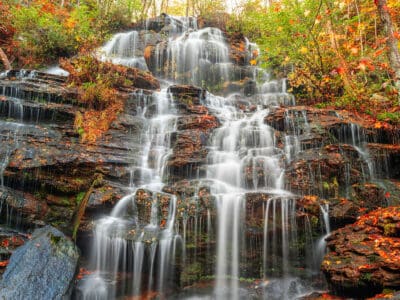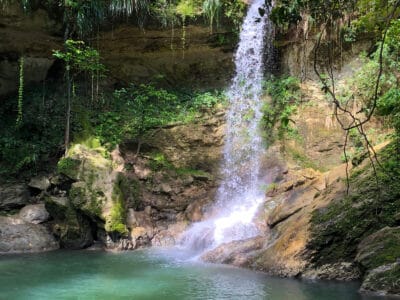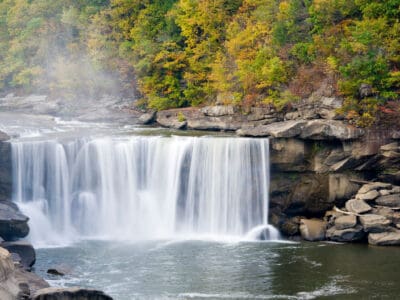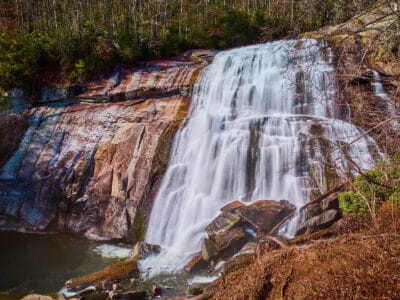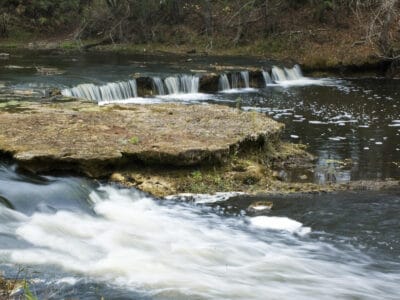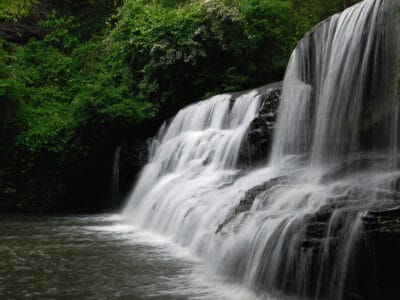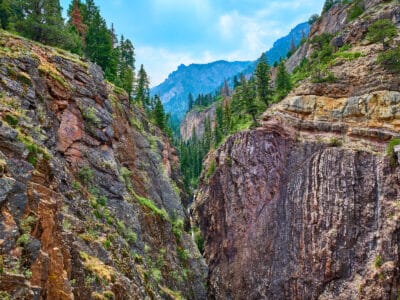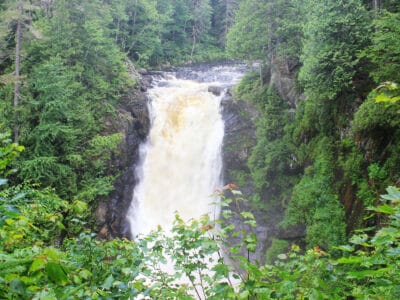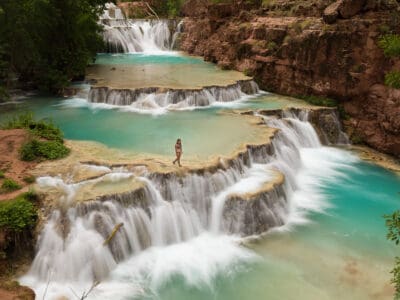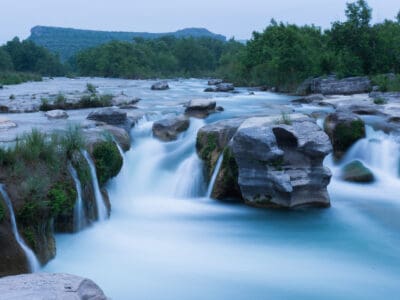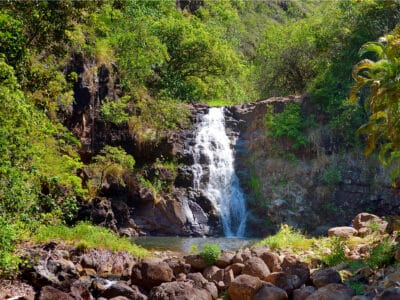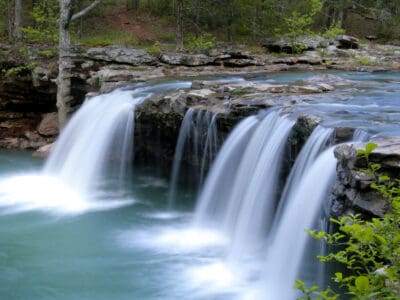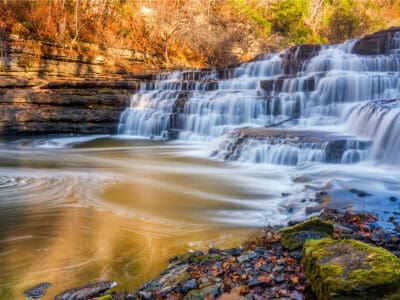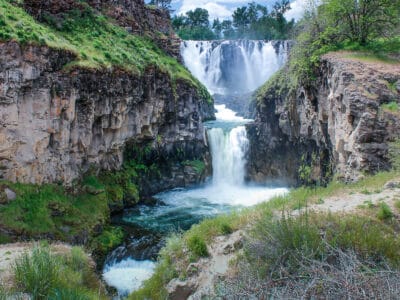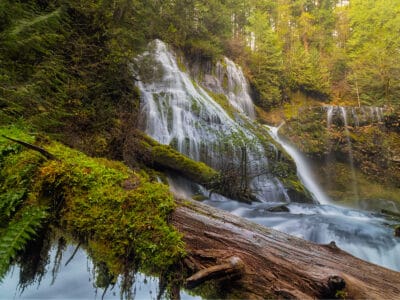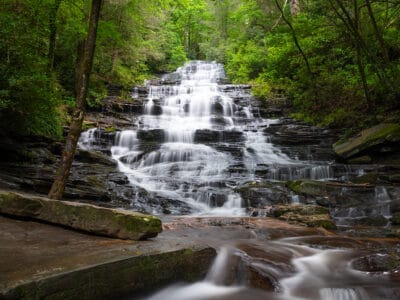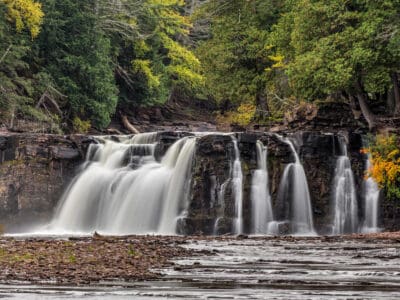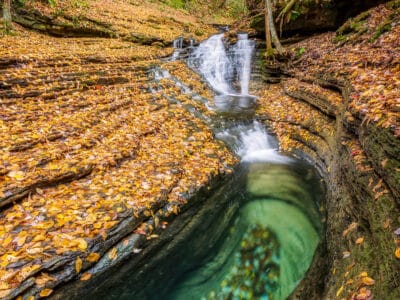Waterfalls are some of the most impressive tourist attractions that travelers look forward to when on holiday. Nothing compares to seeing one, especially if we’re talking about waterfalls such as Angel Falls, whose height is 3,212 ft (979 m). Even local waterfalls enjoy regular visitors, even though it’s still the same waterfall they’re seeing.
But what are they exactly?
Waterfalls are not neutral formations, so to speak. They are points in rivers and streams where water is met with a vertical drop that it must cross. Sometimes, multiple vertical drops are involved – these form either a staircase waterfall (drops are subsequent) or multiple waterfalls across the same river or stream. Waterfalls can be the result of water melting over the edges of ice shelves or icebergs.
These formations are often seen as places of prayer and rest (a natural sanctuary, if you may). Recently, however, they have been increasingly used as sources of hydropower. Still, their primary purpose for a country or area is a touristic one.
Suppose you’re interested in how waterfalls form, their characteristics, and which are the most famous in the world. In that case, this page has all the information you need!
What Causes Waterfalls to Form?
Different phenomena cause waterfalls to form. The most common one requires a river that flows over a layer of bedrock (which is highly resistant) and a part of the river that sits on a softer rock layer. Water erodes bedrock slowly. The same cannot be said of softer rock layers, which erode much faster and, in turn, create waterfalls. This process is continuous for as long as there’s a soft rock layer for water to erode into. But things are a bit more complicated than this.
- Waterfalls can only form in young rivers. The channel of such rivers is deep and narrow; thus, water has increased density and flows faster.
- At the same time, the upper course of a river is more favorable to waterfall formation as it usually features bedrock and soft rock parts.
- Given the speed and the flow of a young river’s waters, waterfalls can sometimes start as rapids, further increasing water speed. In time, water erodes the soft rock at the end of the bedrock layer, elevating the latter.
- Initially, water meets rock and erodes it. This forms an initial waterfall with a minimal drop. However, as the overhang slowly collapses, water carries rough particles across the layer of soft rock – the interaction of the two causes a process known as abrasion.
- Erosion combined with abrasion increases a waterfall’s drop considerably over time. The force of the water and the rock particles are thrown constantly downwards into the stream bed, causing the plunge pool to increase in size.
The above is known as the caprock model of waterfall formation. Another way of formation involves a fault line, a discontinuity in rock volume that favors the formation of a waterfall. The edges of a glacial trough can also be the formation point of a waterfall. There, rivers or streams that used to flow inside a glacier keep flowing into the valley formed by the melting or receding of a said glacier.
Last but not least, our planet also features something known as underwater waterfalls as well. The difference in water temperature causes them. When cold and warm water meet next to an ocean gorge, cold water, by nature, rushes to the gorge’s bottom, creating an underwater waterfall.
Types of Waterfalls
There are ten types of waterfalls on the planet Earth. These formations are classified by the way they descend (and, in part, by geometry as well, as you’ll see below).
Let’s see what the ten types of waterfalls are!
1. Ledge Waterfall
Ledge waterfalls have water descending over a vertical cliff. The water stream is partially in contact with the bedrock layer. There are three additional types of ledge waterfalls:
- Block Waterfall – water descends from a wide river or stream, with a thundering flow. The Blue Nile Falls, the Faxi Falls, and the Rhine Falls are all block waterfalls.
- Classic Ledge Waterfall – in this case, stream width is approximately the same as fall height, resulting in a vertical square shape of the waterfall.
- Curtain Waterfall – here, fall height is larger than the stream width.
2. Plunge Waterfall
In this case, the water plunges over the bedrock layer that the river sits on. At a point, the water stream loses contact with the bedrock layer and engages in a freefall. This is caused by the erosion of a soft rock layer that happened to be partly under the bedrock layer.
Angel Falls, Caracol Falls, and Hannoki Falls are plunge waterfalls.
3. Punchbowl Waterfall
This type is probably the most common one. Its drop height can vary from hundreds of meters to only a couple. Regardless of drop height, the water flow is always concentrated. It spreads only before reaching the plunge pool, but not in a destructive manner. As a result, swimming in the plunge pool and under the waterfall stream itself is not dangerous and is considered easy.
Wailua Falls, Cedar Creek Falls, and Tawhai Falls are all punchbowl waterfalls.
4. Horsetail Waterfall
Another common type is the horsetail waterfall. Unlike the plunge type, water is always in contact with the bedrock layer the river sits on. Depending on the shape and ridges of the bedrock layer underneath, the waterfall’s drop can be slightly diverted, creating beautiful scenery.
Mount Damper Falls and Reichenbach Falls are horsetail waterfalls.
5. Cascade Waterfall
Cascade waterfalls are known for their stillness. The water flows over a series of rock steps upon leaving the main river course. As such, the drop of this type is very small – there are multiple drops in some cases, most of them being miniature horsetail waterfalls.
Hukou Falls and Monkey Falls are cascade waterfalls.
6. Tiered/Multi-step/Staircase Waterfall
As the name implies, tiered waterfalls feature consecutive waterfalls (usually small in height) that drop one after another. Each individual waterfall in a multi-step formation has its own drop and pool (it is more of a sunken pool in this case since water doesn’t really plunge down). The common name for this type is staircase waterfall.
Fukuroda Falls, Ebor Falls, and Ouzoud Falls are staircase waterfalls.
7. Cataract Waterfall
You know for sure when you approach such a waterfall. This type is known for its strong currents and sheer power of the water drop. In fact, cataract waterfalls are famous for the thundering sound they emit, which can be heard from quite a distance.
Victoria Falls and the Boyoma Falls are cataract waterfalls.
8. Segmented/Fan Waterfall
Segmented waterfalls consist of distinct water flows that form as the stream descends. The water is almost permanently in contact with the bedrock layer, as the latter is sloped. Some waterfalls have only two or three segments, while others have more; these are often referred to as fan waterfalls.
The Dip Falls, the Virginia Falls, and the High Falls are segmented/fan waterfalls.
9. Moulin Waterfall
This is more of a pit/hole than a waterfall. A moulin waterfall resembles a well shaft and is carved into a glacier or ice sheet. Water enters from above, forming an isolated waterfall.
10. Chute Waterfall
Last but not least, chute waterfalls are based on water pressure. The waterfall’s drop is located near an extremely narrow passage, causing water to build up pressure and volume. Water leaves the passage with extreme currents. Swimming is not possible near the drop of such a waterfall.
The Three Chutes Falls and the Egan Chute are chute waterfalls.
There are two additional, albeit rarer, types of waterfalls. Some are temporary waterfalls, meaning they do not have a continuous flow. Others are ephemeral, meaning that they flow only after snowmelt or rainfall.
Famous Waterfalls From Across the World
If you’re about to plan a trip and want to visit one or two famous waterfalls while you’re at it, this list will likely help you.
Angel Falls, Venezuela
Angel Falls is a plunge-type waterfall. It drops from the Auyán-tepui mountain, in Gran Sabana, Bolivar State. This is the world’s highest (uninterrupted) waterfall, with a drop of almost 1km – precisely, 979 meters. Out of the 979-meter (3,212 feet) drop, about 400m (1,312 ft) consists of raptors and sloped cascades below the main plunge. The waterfall also features a 30 meter (98 foot) plunge downstream.
It is one of the world’s top tourist attractions – people can visit both the waterfall and the Canaima National Park nearby, home to the Auyán-tepui mountain.
Niagara Falls, USA & Canada

Niagara Falls is famous for standing on the border between Canada and the US.
©YingHui Liu/Shutterstock.com
This cataract waterfall is made up of a group of three waterfalls at Niagara Gorge’s southern end. The three are Horseshoe Falls, Bridal Veil Falls, and American Falls. Niagara Falls has a total height of 167 feet (51m), features three drops, and has the highest flow rate among all North American waterfalls, with a drop of over 164 feet (50m).
Niagara Falls is famous for standing on the border between Canada and the US. Travelers and visitors suggest that the Canadian vantage point is superior.
Victoria Falls, Zimbabwe

Victoria Falls is known for its incredibly wide edge.
©Eva Mont/Shutterstock.com
In the Bantu language Lozi, Victoria Falls means The Smoke That Thunders, while in Tonga, it means Boiling Water. These names do justice to this astonishing waterfall. It is known for its incredibly wide edge – 5,604 feet (1,708 meters), which enhances the view of the Zambezi River behind the waterfall.
It is the largest waterfall in the world based on combined height and width; the result is the largest sheet of falling water worldwide.
Yosemite Falls, USA
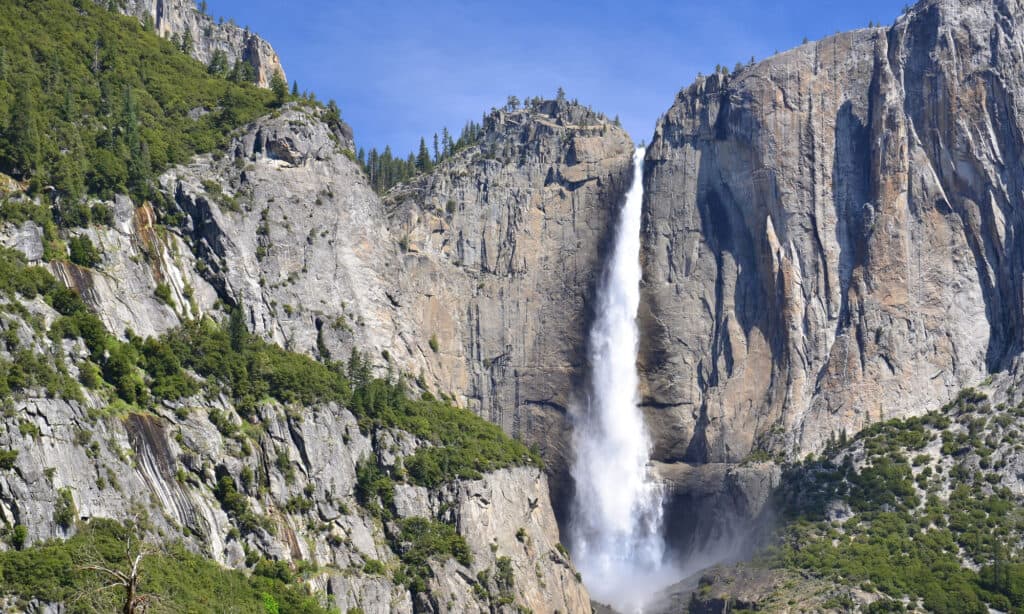
Yosemite Falls consists of three sections:
Upper Yosemite Fall; Middle Cascades;and
Lower Yosemite Fall.
©A.Hornung/Shutterstock.com
This is the highest waterfall in Yosemite National Park, with a total drop of 2,425 ft (739m). It features 3 drops, the longest being 1,430 ft (436m). It consists of three sections: Upper Yosemite Fall; Middle Cascades; and Lower Yosemite Fall. Each section is a tourist attraction – with plunges, drops, gorges, and viewing points.
There are multiple trails surrounding Yosemite Falls, especially in their upper section. A trekking session is in order if you happen to be here.
Largest Waterfalls in the World
| Waterfall | Location | Largest in Terms Of? | Height | Width |
|---|---|---|---|---|
| Khone Phapheng Falls | Ban Hang Khone, Laos | Width | 69 feet (21m) | 35,376 feet (10,783 m) |
| Angel Falls | Bolivar, Venezuela | Height | 3,212 feet (979 m) | 500 feet (152 m) |
| Pará Falls | Bolivar, Venezuela | Width | 210 feet (64m) | 18,399 feet (5,608 m) |
| Tugela Falls | KwaZulu-Natal, South Africa | Height | 3,110 feet (948 m) | 50 feet (15 m) |
| Kongou Falls | Ogooue-Ivindo Province, Gabon | Width | 184 feet (56 m) | 10,500 feet (3,200 m) |
| Tres Hermanas Falls | Junin Region, Peru | Height | 2,999 feet (914 m) | 39 feet (11 m) |
A List of Waterfalls – Noteworthy Mentions
| Waterfall | Location | Noteworthy Feature(s) |
|---|---|---|
| Iguazu Falls | Argentina & Brazil | 275 distinct waterfalls in a horseshoe formation; A total of 1.7 miles of flowing waterfalls |
| Plitvice Lakes Waterfalls | Croatia | 16 terraced lakes joined by waterfalls; |
| Ban Gioc-Detian Falls | Vietnam & China | Three-tiered waterfall; |
| Tugela Falls | South Africa | Five separate tiers with a total of 948 meters in falls; |
| Gullfoss | Iceland | Has a golden hue under sunlight, hence the name, which translates to Golden Falls; |
| Dudhsagar Falls | India | Four tiers of cascade waterfalls; |
| Kaieteur Falls | Guyana | Features a 226-meter dive in a single drop; |
| Ruby Falls | USA | Found underground and accessed via a 26-story elevator; |
| Sutherland Falls | New Zealand | Three separate cascades stretching over 580 meters; |
| Kuang Si Waterfall | Laos | Three-tiered plunge waterfall; close to the city of Luang Prabang. |
Thank you for reading! Have some feedback for us? Contact the AZ Animals editorial team.





